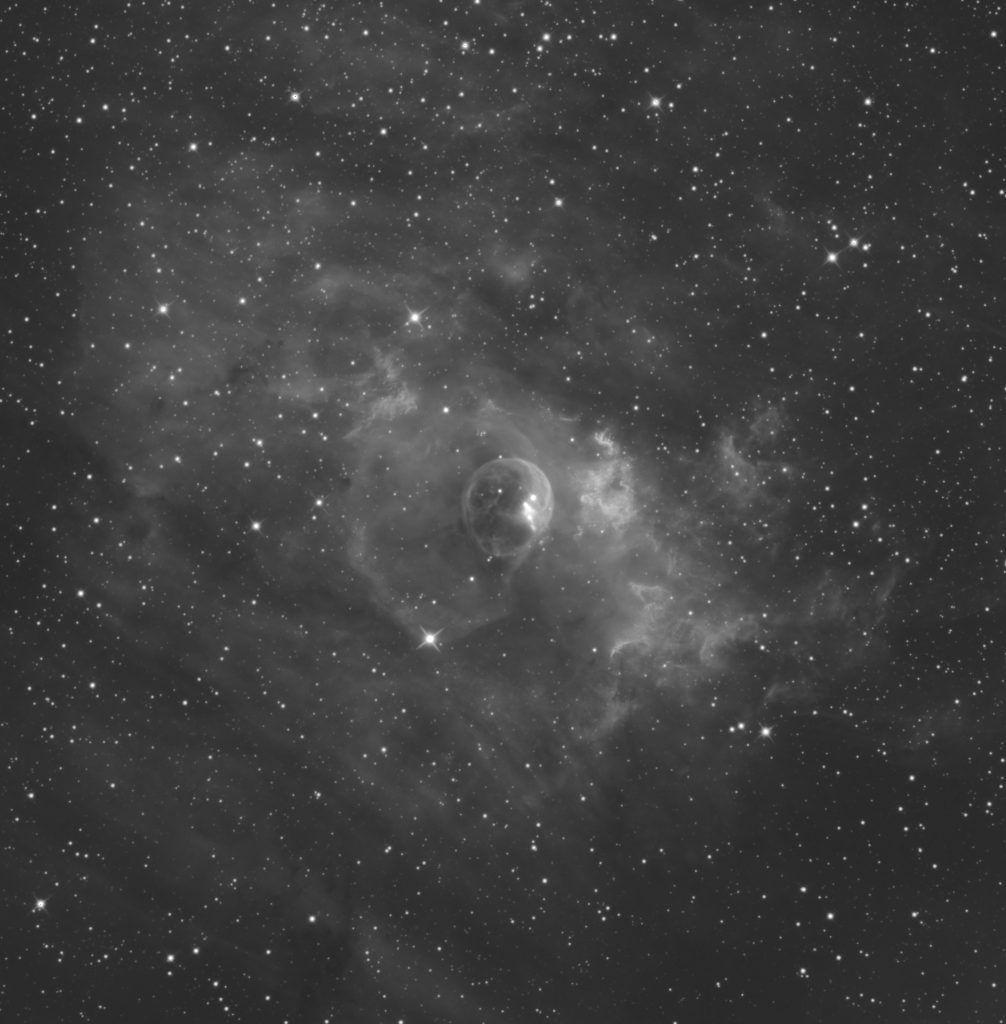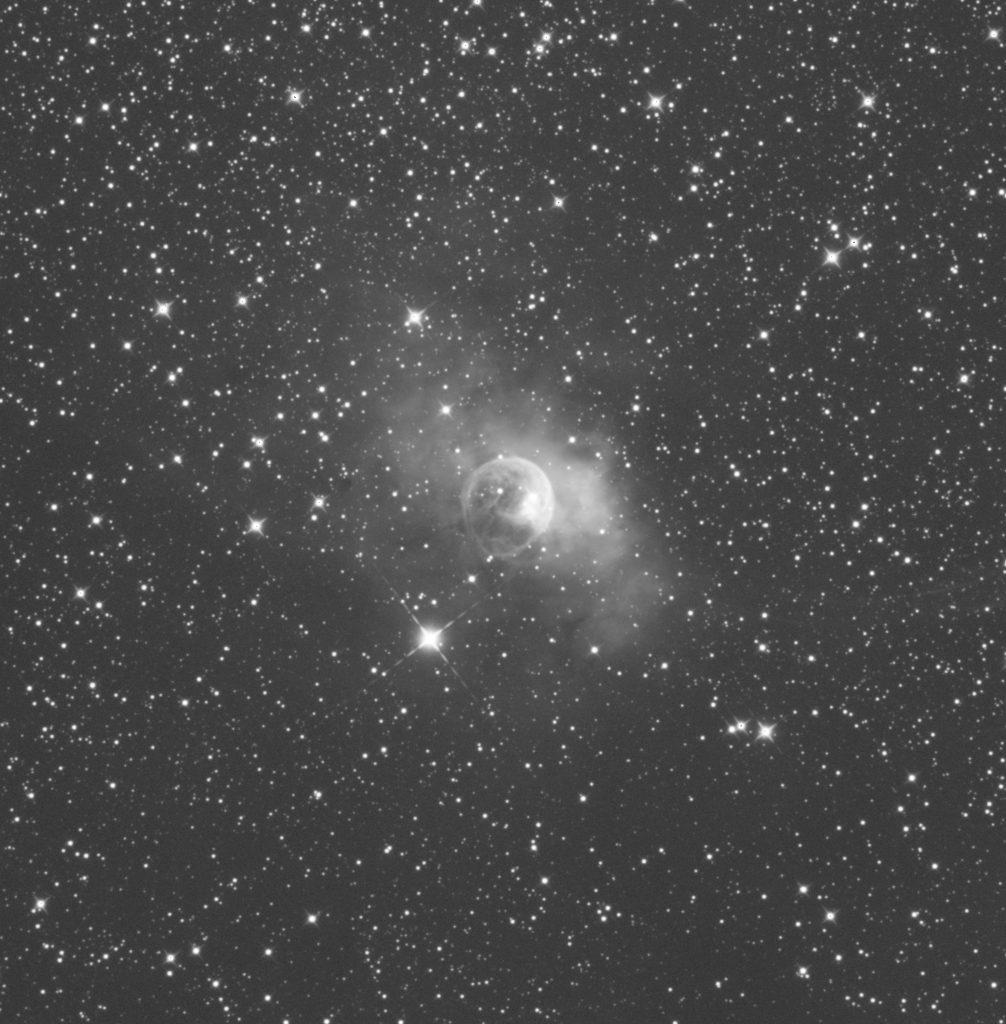The Bubble Nebula is emission nebula in the constellation Cassiopeia. It is 7100 light-years from our Earth. The most famous part of the nebula is the central part of the bubble. It was discovered in 1787 by William Herschel.
The Bubble Nebula – NGC 7635 (HST)

| Telescope | ASA 10″ F/3.6 10N ASTROGRAPH OTA |
| Focal length | 900 mm |
| Mount | G53f |
| Imaging camera | Atik 460EX mono |
| Guiding cameras | Lodestar X2 -Autoguider |
| Guiding optics | ASA 10″- OAG |
| Focal reducers | ASA 3″ Wynne Corrector 0,85x |
| Constellations | Cassiopeia |
| Distance | 7100 light years |
| RA center | 23h 20′ 48.3″ |
| DEC center | +61°12′ 06″ |
| Location taken | Slovakia |
| Date taken | 12/2020 |
| Pixel scale | 1.04 arcsec/pixel |
| Filters | Astronomik Ha 6nm , Astrodon OIII 5nm, Astrodon SII 5nm, |
| Exposure | 48x1200s BIN1 Ha filter 43x1200s BIN2 OIII filter 43x1200s BIN2 SII filter |
| Total exposure | 44,7 hours |
| Processing software | PixInsight, CCD Inspector |
The processing object The Bubble Nebula – NGC 7635 (HST) was captured using narrowband filters.
(Hydrogen-alpha – H-α 6 nm, Sulfur – SII 6 nm, Oxygen – OIII 5 nm)
Here you see a few hours of individual images, which are processed by joining in Hubble (Narrowband in Hubble Palette). Photos are only gently stretched (CurvesTransformation).
You can see the final product above.






